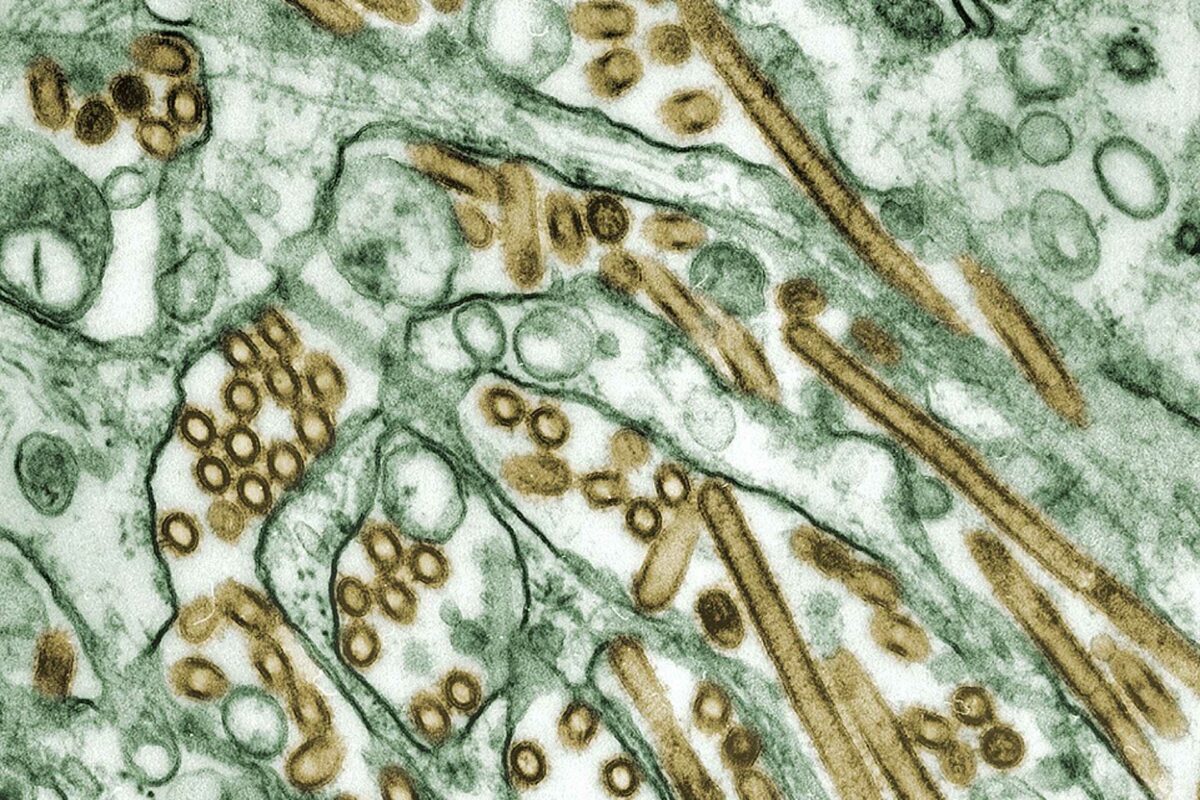A group of eminent US academics has issued an open letter of appeal to national and international bodies and Architecture, Engineering and Construction (AEC) industry consultants and professional organisations, to “recognize the unproven nature of many electronic air cleaning devices”.
“These devices are typically electrically powered air-cleaners intended to remove particles from airstreams or to inactivate pathogens. As they are unproven, it is critical to avoid wasting valuable emergency COVID relief aid dollars installing them within school district facilities,” says the letter.
Real-world conditions
The letter says studies (see ref: 1,2,3,4,5) indicate a much lower degree of effectiveness in real-world conditions than typically claimed by manufacturers. Studies (ref:1,3,4,5,6,7,8) also indicate that chemical compounds at harmful concentrations can be produced in real-world settings, directly as a part of the process or as by-products created from the chemical reactions occurring within the space. In the absence of regulation and with presently very little peer-reviewed research, significant questions remain regarding effectiveness and the potential impacts on human health.
Not for school use
“Following the precautionary principle, we must advocate for schools not to use electronic air cleaning devices. The proven measures that should be taken to address airborne transmission risk include properly sized and maintained ventilation (mechanical and natural), mechanical filtration (including portable HEPA filter units), and germicidal ultraviolet light systems. Such measures are practical and often can be easily implemented; many are not costly, particularly when assessed on a per student basis. Even without the relief aid dollars many are inexpensive enough to be funded with capital outlay dollars instead of passing a bond.
“Many districts, constrained by varying degrees of limited budgets, deferred maintenance, and pressure to get kids back in school, have already implemented electronic air cleaning devices, relying on incomplete data and exaggerated claims to make a well-intended, but incorrect decision. Despite the resources invested, we recommend that these districts strongly consider turning off or disabling these electronic air cleaners to prevent unintended harm to building occupants. These districts should also recognize that the intended COVID safety benefits have not been provided, putting students, teachers, staff, and their communities at greater risk, and consider what applications of the above proven measures, along with other strategies, can be implemented to truly mitigate risk.
Overview of Electronic Air Cleaning Equipment
“Electronic air cleaning equipment includes a variety of electrically powered air-cleaning devices intended to remove particles from airstreams or to inactivate pathogens. The widely used removal mechanisms occur by electrically charging particles using corona wires, pins or needles, with plasma (positive and/or negative ions formed by charging major components of air as well as pollutant molecules), or by photocatalytic oxidation. The design of the system may create one or more reactive oxygen species (ROS), ozone, hydroxyl radicals, superoxide anions, gaseous hydrogen peroxide, and others.

Research available
The strength of the ions produced appears insufficient to effectively clean the air, and the device also produced VOCs
“The peer reviewed research on the effectiveness of electronic air cleaning technology is limited. The independent and peer reviewed studies (ref: 1,2,3,4,5) that have been conducted indicate levels of effectiveness below that reported by manufacturers for the elimination of pathogens, volatile organic compounds (VOCs) (including aldehydes), and particulate matter. The lab testing performed by manufacturers (directly or through contract) often is not reflective of real-world settings like actual classrooms. Manufacturers and distributers commonly apply these lab results in a blanket manner to a variety of building conditions, over-estimating the technology’s effectiveness in a variety of real-world situations. The highly variable physical environmental conditions that exist outside of a laboratory (space configurations, system types, surface/finish material types, etc.), combined with the variability in mix of contaminants and associated chemical reactions, will result in pathogen, VOC, and/or particulate matter elimination efficiencies that can vary significantly from space to space and from the lab results (ref: 9).
‘Insufficient to clean the air’
Peer reviewed studies indicate the potential of electronic air cleaners to produce ozone, VOCs (including aldehydes), and ultrafine particles
“For example, one recent independent test (ref:2) of needlepoint bipolar ionization (NPBI) technology found that the strength of the ions produced appears insufficient to effectively clean the air, and the device also produced VOCs. Another study (ref: 4), conducted by The Bureau of Toxic Substance Assessment (BTSA), monitored indoor air quality (IAQ) in a high school classroom and characterized changes in IAQ resulting from a bipolar ionization (BPI) unit operating in the air handling unit serving the classroom. Higher levels of ozone and ultrafine particles were measured, indicating that IAQ worsened with the ionization device in operation. Both of these studies also raise serious concerns about the unintended by=products produced from these electronic cleaning devices, which are typically neither studied nor reported by the device manufacturers.
Worrying impacts on human health
“Relevant to health impacts, peer reviewed studies indicate the potential of electronic air cleaners to produce ozone, VOCs (including aldehydes), and ultrafine particles (ref:1,3,4,5,6).
Ozone, classified as a lung irritant (ref: 10,11) is produced by some electronic air cleaning technology at levels harmful to human health (ref: 5,6), potentially contributing to respiratory disease, cancer, and auto-immune disease (ref:12,13). Some of these technologies do comply with CARB/FDA/UL 867 (ozone emissions resulting in concentrations of less than 50 ppb in a test chamber). However, experts believe any level of exposure is potentially harmful (ref:14) and ASHRAE Standard 62.1 2019 added requirements that ozone levels resulting from an air cleaner should not exceed 5 ppb (ref:15). Some air cleaners also comply with UL 2998 (5 ppb).
“However, we know of no third-party research, white papers, or case studies verifying ozone emissions do not start or do not increase in a variety of installation conditions over time, either as a result of equipment aging, incorrect usage, or changing environmental chemistry conditions. Some manufacturers have anecdotally indicated such data has been collected to verify this. Others have indicated the nature of the technology makes such increases in ozone production over time highly unlikely if not impossible. However, we have yet to see data supporting these statements. In the previously referenced CDC/FEMA study (ref: 5), it was found that a certain bipolar ionization device increased the level of ozone to more than 1,000 ppb even though the device has published test data showing zero ozone production and has obtained UL867 certification.
Cancer & respiratory concerns
As with ozone, exposure to the oxygen free radicals, or reactive oxygen species (ROS), produced deliberately by electronic air cleaning technology’s applications or unintentionally as a result of the chemistry occurring within the space, can potentially contribute to respiratory disease, cancer, and auto-immune disease (ref:12,13,16). In addition, targeted contaminants (including many VOCs) are generally not completely converted into benign CO2 and H2O and instead actually transformed into other harmful by-products (ref:1,6,17,18,19). Whether or not this occurs depends on the other chemicals present within the space. Researchers recognize that we still need to improve our overall understanding of the impact that indoor air chemistry has on human health and wellness (ref: 16).

“Except for comments along the lines of occupants being exposed to “less hazardous reactants and by-products” (ref:20) manufacturers provide little information on a) the amount of potential exposure to either free radicals or potential by-products in real world conditions, b) what risk such exposure may present given the research cited above, or c) how that risk might vary by demographic factors (age, pre-existing conditions, etc.). The lack of reported potentially harmful by-products is also likely due in part to manufacturer funded lab tests not commonly making use of the instruments needed to assess their potential formation, which speaks in part to the need for more standardization of testing protocols (ref: 1,6,9).
“The research conducted on the human health impacts of direct exposure to the ions produced by some electronic air cleaning technology, like BPI, is contradictory and incomplete. One literature review from 2018 (ref:21)found studies with results indicating positive or no health impacts as a result of exposure to negative air ions. However, the authors of the review indicated these results needed further verification. Nor was it clear how many, if any, of these studies considered a) long-term and/or repeated exposure and b) variation in impact by age group and those with pre-existing conditions.
“A few recent studies, however, have found potential negative health consequences. One of these examined the impacts on college students in a dormitory setting (ref: 7) and found increases in exposure to negative air ions (potentially along with their reaction products) resulted in systemic oxidative stress which can lead to cell and tissue damage. Another study (ref: 8) of school children found exposure to negative air ions resulted in a negative impact on heart rate variability. The authors of both studies concluded that such results warrant further study before using this technology to reduce particulate matter (or exposure to pathogens) in occupied settings.
Questionable efficacy & claims
“Manufacturers have also stated that by “cleaning the air” this technology allows for a reduction in energy consumption by reducing minimum required ventilation rates as much as 70% or down to 5 cfm per person. They claim to comply with ASHRAE 62.1’s indoor air quality procedure (IAQP) (ref:15) which allows for additional means of contaminant removal or dilution other than that provided by the introduction of outside air. However, as has been discussed above, the effectiveness of electronic air cleaning technology in real-world conditions is questionable at best, meaning contaminant concentration levels are likely not, in fact, reduced. Reducing outside air below the levels dictated by ASHRAE 62.1’s prescriptive design procedures will eliminate one of the most effective protection layers available to schools for diluting the SARS-CoV-2 virus (and other contaminants).
Smoke & Mirrors
All this smoke and mirrors is possible because of the general lack of regulations and standards for both the manufacturing and testing of electronic air cleaning technology
“The slick marketing materials and white papers/test results proclaiming over 90% pathogen elimination can be hard to resist by districts struggling with limited budgets and neglected buildings to demonstrate to their communities that buildings and classrooms are safe. The fine print, if it exists, may be overlooked with everyone’s focus on the promise of a silver bullet. All this smoke and mirrors is possible because of the general lack of regulations and standards for both the manufacturing and testing of electronic air cleaning technology (ref:1). It has created a marketplace that some liken to the “wild west,” making it a challenge for most engineers and consultants to discern fact from fiction, let alone school district facilitators, administrators, and board members.
“All of this is why the CDC encourages (ref:22) consumers “… to exercise caution and to do their homework” before purchasing BPI technology (with ASHRAE referencing this statement in lieu of taking a formal position). It’s also why the U.K.’s Scientific Advisory Group for Emergencies states (ref:9)that electronic air cleaning technology has a “… limited evidence base that demonstrates effectiveness against SARS-CoV-2 and/or may generate undesirable secondary chemical products that could lead to health effects such as respiratory or skin irritation.” They do not recommend using it unless “… their safety and efficacy can be unequivocally and scientifically demonstrated by relevant test data.” The Spanish Ministry of Science states in a recent report (ref:23) that “Public funds should not be used in the short term for the purchase of air cleaners based on plasmas, oxidation, photocatalysis, or ions, unless their safety can be first confirmed [by investigating] the potential formation of toxic chemical products.”
“We agree with this recommendation. None of the $176 billion approved over the last several months by the Federal government for K-12 COVID relief aid should be spent on this unproven technology. Particularly when other proven and safe technologies and strategies are available to mitigate the risk from SARS-CoV-2 and other pathogens while also improving the learning environment and health and wellness overall. Given the evidence for the ineffectiveness of electronic air cleaning equipment in addressing the risk of infection from SARS-CoV-2 in real-world conditions, its use creates a false sense of security. We ask that school district facility managers and administration leadership, as well as the relevant national and international bodies and Architecture, Engineering and Construction (AEC) industry consultants, recognize the unproven nature of electronic air cleaning equipment and avoid wasting valuable emergency COVID relief aid dollars installing it within school facilities.”
Notes to readers
The following scientists and consultants contributed to formulating this commentary.
Dr. Marwa Zaatari | Partner | DZINE Partners | [email protected]
Dr. Marcel Harmon | Associate Principal and Research & Development Lead | BranchPattern |[email protected]
The following scientists and consultants reviewed and support this document.
Dr. Linsey Marr | Professor | Department of Civil and Environmental Engineering | University of Virginia Tech
Dr. Jose Luis Jimenez | Professor of Chemistry & Biochemistry | University of Colorado
Dr. William Bahnfleth | Professor | Department of Architectural Engineering | Penn State, Professional engineer
Dr. Shelly Miller | Professor | Department of Mechanical Engineering | University of Colorado Boulder
Dr. Jeff Siegel | Professor | Department of Civil and Mineral Engineering | University of Toronto
Mr. Hoy Bohanon | Professional mechanical engineer | Owner Hoy Bohanon Engineering
Dr. Elliott Gall | Assistant professor | Thermal & Fluid Science Group | Portland State University
Dr. Kim Prather | Professor |Climate, Atmospheric Science & Physical Oceanography | University of California San Diego
Dr. Delphine Farmer | Associate Professor | Department of Chemistry | Colorado State University
Dr. Brent Stephens | Professor | Department of Architectural Engineering | Illinois institute of Technology
Dr. Richard Corsi | Professor | Maseeh College of Engineering and Computer Science | Portland State University
Dr. Wayne Thomann | Assistant Professor |Family Medicine and Community Health | Duke university
Disclaimer. The views and opinions expressed in this article are those of the authors and do not necessarily reflect the official policy or position of any agency, institution, or firm.
Potential conflict of interest. The authors: No reported conflicts of interest
References
- Zeng Y, Manwatkar P, Laguerre A, et al. Evaluating a commercially available in-duct bipolar ionization device for pollutant removal and potential byproduct formation.Build Environ2021; 195: 107750.
- Trane Technologies.A Taxonomy of Air-Cleaning Technologies Featuring Bipolar Ionization, Whitepaper — Bipolar Ionization.pdf (2021, accessed 31 March 2021).
- Sleiman M, Fisk WJ.Evaluation of Pollutant Emissions from Portable Air Cleaners. Final Report: Contract №10–320. Berkeley, CA, (2014, accessed 5 April 2021).
- Crawford T, Fritz P, Wainman T. Changes in IAQ Caused By Corona Discharge Air Cleaner.ASHRAE J2018; 64–67.
- Gressel MG, Wilder LC.Evaluation of mitigation strategies for reducing formaldehyde concentrations in unoccupied Federal Emergency Management Agency-owned travel trailers. Atlanta, GA, (2009).
- U.S. Environmental Protection Agency (EPA).Residential Air Cleaners: A Technical Summary, 3rd Edition, Portable Air Cleaners, Furnace and HVAC Filters, (2018, accessed 6 April 2021).
- Liu W, Huang J, Lin Y, et al. Negative ions offset cardiorespiratory benefits of PM2.5 reduction from residential use of negative ion air purifiers.Indoor Air2021; 31: 220–228.
- Dong W, Liu S, Chu M, et al. Different cardiorespiratory effects of indoor air pollution intervention with ionization air purifier: Findings from a randomized, double-blind crossover study among school children in Beijing.Environ Pollut2019; 254: 113054.
- EMG (Environmental and Modelling Group).EMG: Potential application of air cleaning devices and personal decontamination to manage transmission of COVID-19, 4 November 2020, (2020, accessed 9 March 2021).
- U.S. Environmental Protection Agency (EPA). Indoor Air Pollution: An Introduction for Health Professionals | Indoor Air Quality (IAQ) | US EPA, (accessed 31 March 2021).
- U.S. Environmental Protection Agency (EPA).Air Quality Criteria For Ozone and Related Photochemical Oxidants (Final Report, 2006). Washington, DC, (2006, accessed 31 March 2021).
- Phaniendra A, Jestadi DB, Periyasamy L. Free Radicals: Properties, Sources, Targets, and Their Implication in Various Diseases.Indian J Clin Biochem2015; 30: 11–26.
- Vallyathan V, Shi X. The role of oxygen free radicals in occupational and environmental lung diseases.Environ Health Perspect1997; 105: 165–177.
- Corsi RL.Assessment of Maximum Ozone Emissions in Residential, Office and School Buildings. Austin, TX, (2006, accessed 5 April 2021).
- ASHRAE.ANSI/ASHRAE Standard 62.1–2019 — Ventilation for Acceptable Indoor Air Quality. Atlanta, GA, (accessed 5 April 2021).
- Wells JR, Schoemaecker C, Carslaw N, et al. Reactive indoor air chemistry and health — A workshop summary. In:International Journal of Hygiene and Environmental Health. Elsevier GmbH, 2017, pp. 1222–1229.
- Price DJ, Day DA, Pagonis D, et al. Budgets of Organic Carbon Composition and Oxidation in Indoor Air.Environ Sci Technol. Epub ahead of print 2019. DOI: 10.1021/acs.est.9b04689.
- Isaacman-VanWertz G, Massoli P, O’Brien R, et al. Chemical evolution of atmospheric organic carbon over multiple generations of oxidation.Nat Chem2018; 10: 462–468.
- Peng Z, Jimenez JL. Radical chemistry in oxidation flow reactors for atmospheric chemistry research.Chem Soc Rev2020; 49: 2570–2616.
- Daniels SL.Applications of Air Ionization for Control of VOCs and PM X, Paper #918, (2019, accessed 31 March 2021).
- Jiang S-Y, Ma A, Ramachandran S. Negative Air Ions and Their Effects on Human Health and Air Quality Improvement.International Journal of Molecular Sciences; 19. Epub ahead of print 2018. DOI: 10.3390/ijms19102966.
- CDC via ASHRAE. CDC Position on Bipolar Ionization, (2020, accessed 31 March 2021).
- Alcamí A, del Val M, Hernán M, et al.Scientific report on the modes of transmission of COVID-19, (2020, accessed 8 April 2021).
Content Team
Work in Mind is a content platform designed to give a voice to thinkers, businesses, journalists and regulatory bodies in the field of healthy buildings.




